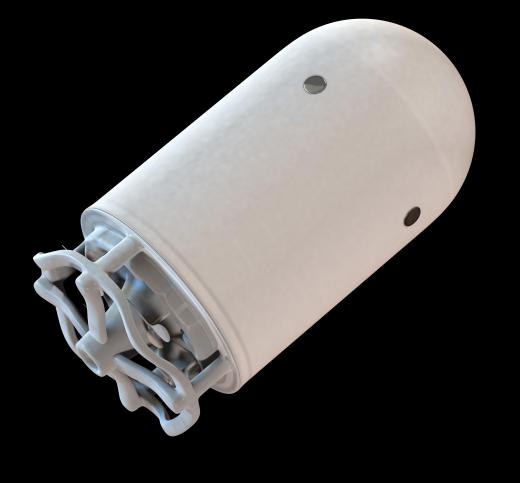How Large is a Nanometer?
 Michael Anissimov
Michael Anissimov
A nanometer is quite small, a billionth of a meter. It is 20 times wider than the diameter of a hydrogen atom. In terms of the electromagnetic spectrum, 1 nanometer is about the wavelength of soft x-rays. Hard x-rays and gamma rays have a shorter wavelength. The width of a DNA double-helix, the molecule that carries our genetic code, is about 2 nanometers.
As the wavelength of light is 400-700 nanometers, science did not possess microscopes capable of probing the 1-nanometer scale until the invention and refinement of the electron microscope. Electron microscopes use electrons rather than photons (light) to take images. Today's best electron microscopes have a resolution of just 0.05 nanometers, the diameter of a hydrogen atom.

To get the length of a nanometer in perspective, pretend you were shrunk in size about 1.5 billion times, so your height become 1 nanometer. A human would be about 1.5 million km tall, from our new perspective. This is about 120 Earth diameters, or three times longer than the distance from the Earth to the Moon.
Bacterial flagellum have a diameter of about 20 nanometers. Bacteria in general have a diameter between 300 and 5,000 nanometers. Members of the genus Mycoplasma, lacking a cell wall, are the smallest, at about 300 nanometer width.

Viruses and mobile genetic elements called prions and satellites are smaller than bacteria, with diameters between 5 and 300 nanometers. Some of these entities are only a few base pairs long, and all depend on conventional life forms for their replication.
Eukaryotic, or complex cells, like the cells in our body, are about 10 times larger than bacteria, with diameters between about 5,000 nanometers and 100,000 nanometers. In terms of the nanometer world, these are quite huge.

Nanometer-scale technology has initiated new areas of science and technology, called nanoscience and nanotechnology. These fields seek to exploit nano-level effects for the benefit of humankind. Thus far, nanotechnology has been used in computers, cosmetics, and textiles, but in the longer term, it could be used in practically every conceivable product.
AS FEATURED ON:
AS FEATURED ON:













Discussion Comments
It was only a matter of time until the nanometer was developed. When people started focusing on the microscopic world, they needed a frame of reference to measure things that size.
Today we are starting to delve into the nanotech world. Machines and robots are getting smaller and smaller. We have microchips being engineered that will be smaller than science could have thought fifteen years ago. Using inches or centimeters in the construction of these tiny things would not be practical.
Post your comments